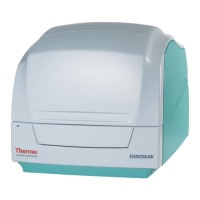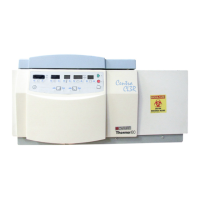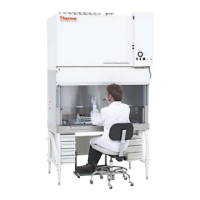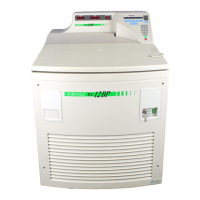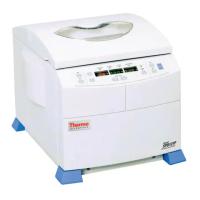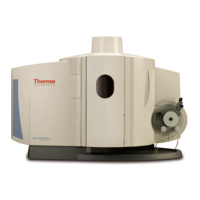4
Ion Transmission and Mass Analysis
Mass Analyzers
Thermo Scientific Orbitrap Fusion Series Hardware Manual 37
Orbitrap Mass Analyzer
The core of the Orbitrap mass analyzer is an axially-symmetrical mass analyzer. It consists of a
spindle-shaped central electrode surrounded by a pair of bell-shaped outer electrodes
(Figure 25). The Orbitrap analyzer employs electrostatic fields, without an RF or magnetic
component, to capture and confine ions.
Figure 25. Schematic of the Orbitrap cell and an example stable ion trajectory
• Extraction of Ion Packets
• Measuring Principle
• Ion Detection
Extraction of Ion Packets
For ion extraction, the mass spectrometer ramps off the RF voltage to the C-trap rods and
applies a pulsing extracting voltage to the electrodes, which pushes the ions orthogonally
through a slot in the inner electrode toward the curved axis. Because of the initial curvature of
the C-trap and its lenses, the ion beam converges on the entrance into the Orbitrap analyzer.
The lenses that follow the C-trap form differential pumping slots and cause spatial focusing of
the ion beam into the entrance of the Orbitrap analyzer. Ions are electrostatically deflected
away from the gas jet, thereby eliminating gas carryover into the Orbitrap analyzer.
Because of the fast ion pulsing from the C-trap, ions of each mass-to-charge ratio arrive at the
Orbitrap analyzer’s entrance as short packets that are only a few millimeters long. For each
mass-to-charge population, this corresponds to a spread of flight times of only a few hundred
nanoseconds for mass-to-charge ratios of a few hundred daltons per charge. Such durations
are considerably shorter than a half-period of axial ion oscillation in the C-trap. When the
mass spectrometer injects the ions into the Orbitrap analyzer at a position offset from its
equator (Figure 26), these packets start coherent axial oscillations without the need for any
additional excitation cycles.
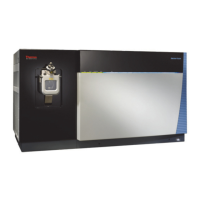
